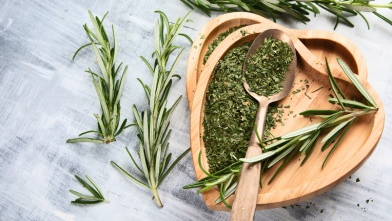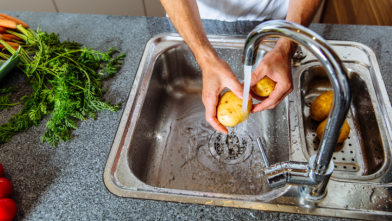If you are new to type 2 diabetes, you might be wondering what the best foods are to eat and how to cook them. Generally, doctors recommend nutrient-dense, low-fat, and low-carb foods.
The good news is, when you cook at home you can make easy, healthy substitutes with basic items to help achieve these goals. Plus, there are lots of great alternatives at the grocery store that will benefit your lifestyle, and your diabetes management. Bonus, they taste great too!
Whole Grains and Flours
Contrary to popular belief, carbs are not your enemy. But some carbs (typically what we consider refined grains, such as white bread) aren’t the best energy source. Instead, try substituting with whole wheat flour, brown rice, or other whole-grain flour or grain products.
Whole grains and flours don’t cause as sharp a spike in blood glucose (blood sugar) levels.
Veggies as a Base
Another great way to cut back on carbs is swapping starchy carbs and vegetables (like pasta, rice, and potatoes) for non-starchy vegetables or vegetable-based alternatives.
There are lots of alternative options at most grocery stores, such as cauliflower rice or cauliflower bread. Although it might sound strange, these options are great low-carb alternatives, and do not compromise on taste.
Low-Fat Dairy
Note: Fat-free does NOT always mean the food is healthy. Check out our guide to understand what it means when companies label their products as a healthier version of their regular counterpart.
Many dairy products have high-fat contents that you might not even be aware of, but the good news is it’s pretty easy to substitute low-fat dairy products in their place.
Whole milk and half-and-half can be replaced with 1 percent milk, skim milk, evaporated skim milk, or nonfat half-and-half. Instead of grabbing sour cream, try using low-fat or nonfat plain yogurt (it’s nice and tangy), buttermilk, or low-fat cottage cheese.
Dairy products also include cheese and ice cream, which also have many low or nonfat options. Also note, most dairy products have carbs, so be sure to include them in your daily carb count.
Swap Solid Fats for Liquid Fats
A lot of recipes call for solid fats (which are typically saturated and trans fats), like butter. An easy swap to cut down on unhealthy fats is by using margarine, spreads, or vegetable oils that are free of trans fat.
This tip will usually work in cooking (making chicken, pasta, etc.), but not necessarily in baking (making cake, cookies, etc.). Check the label to see if the product will work for what you’re making.
Use More Spices
Think of cooking as a great time to experiment! Instead of upping the salt or sugar content, try using new and/or additional spices, herbs, mustards, or vinegar to experience an enhanced flavor profile.
Lean Meats Over Red Meats
Red meat, such as beef or lamb, may be loaded with calories and fat. An easy way to cut back is swapping your red meat for turkey, chicken, or extra-lean beef. This is particularly easy when making chili, burgers, meatballs, or meatloaf.
Alternative Sweeteners
You can find a way to satisfy your sweet tooth without seeing a spike in your blood glucose (blood sugar). Alternative sweeteners such as sucralose, stevia, agave, honey, and pure maple syrup are great substitutes for white granulated and cane sugars.
Start by cutting back overall on sugar and using these as replacements. However, use honey, agave, and maple syrup in smaller amounts than sugar for added flavor.
If using these alternatives in baking, make sure you’re using the correct ratios. With some recipes, you won’t be able to replace white sugar for another sweetener using the same amount. If a recipe calls for one cup of sugar, you may not be able to swap with one cup of an alternative sweetener. Typically, the sweetener’s company will list the amount of alternative sweetener needed to replace white sugar for most baking recipes. Also, the recipe may tell you how much to use as a substitute.
The Bottom Line
Cooking should not be a daunting task, but a place to experiment! After a while, you will get into the swing of things and figure out what healthy swaps work and taste best for you.








